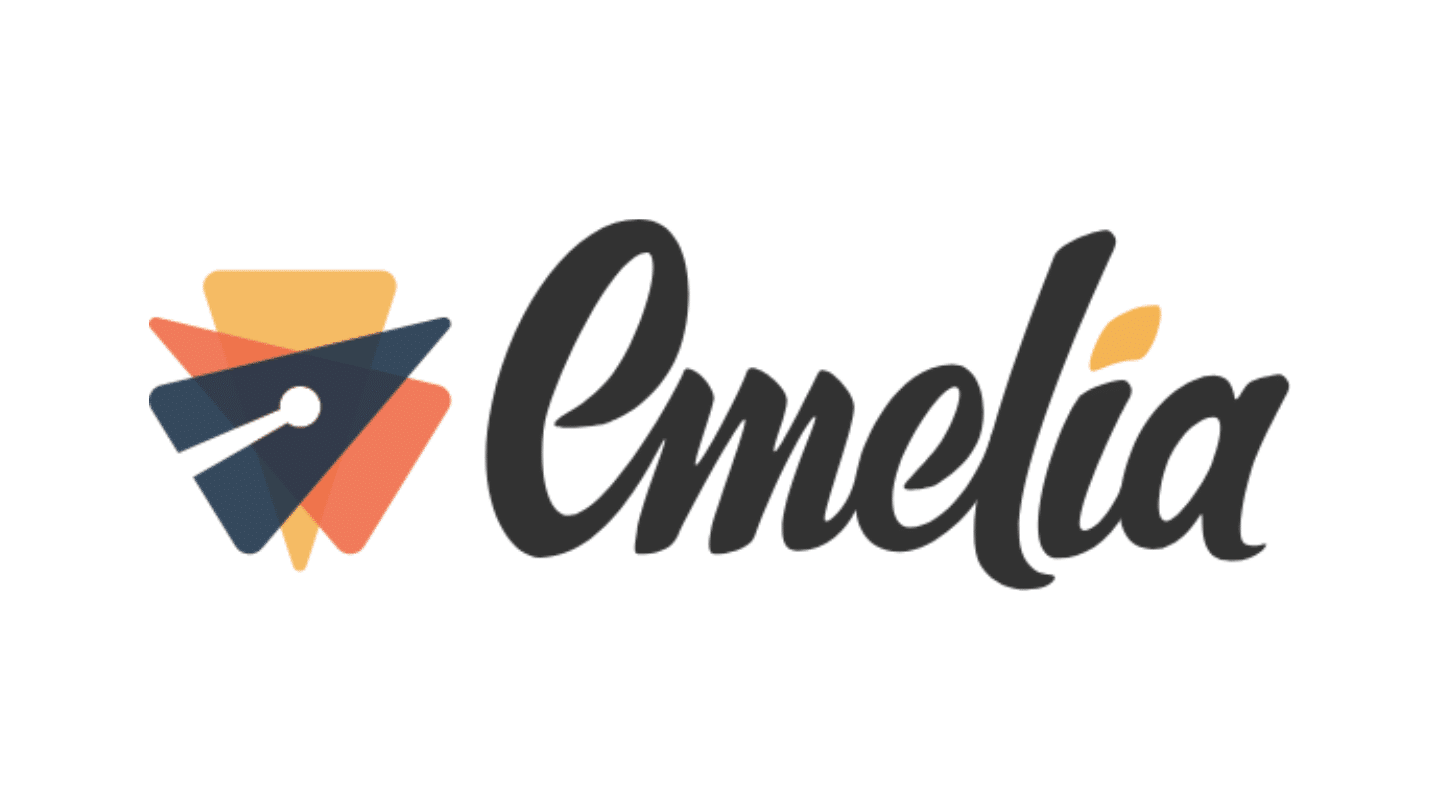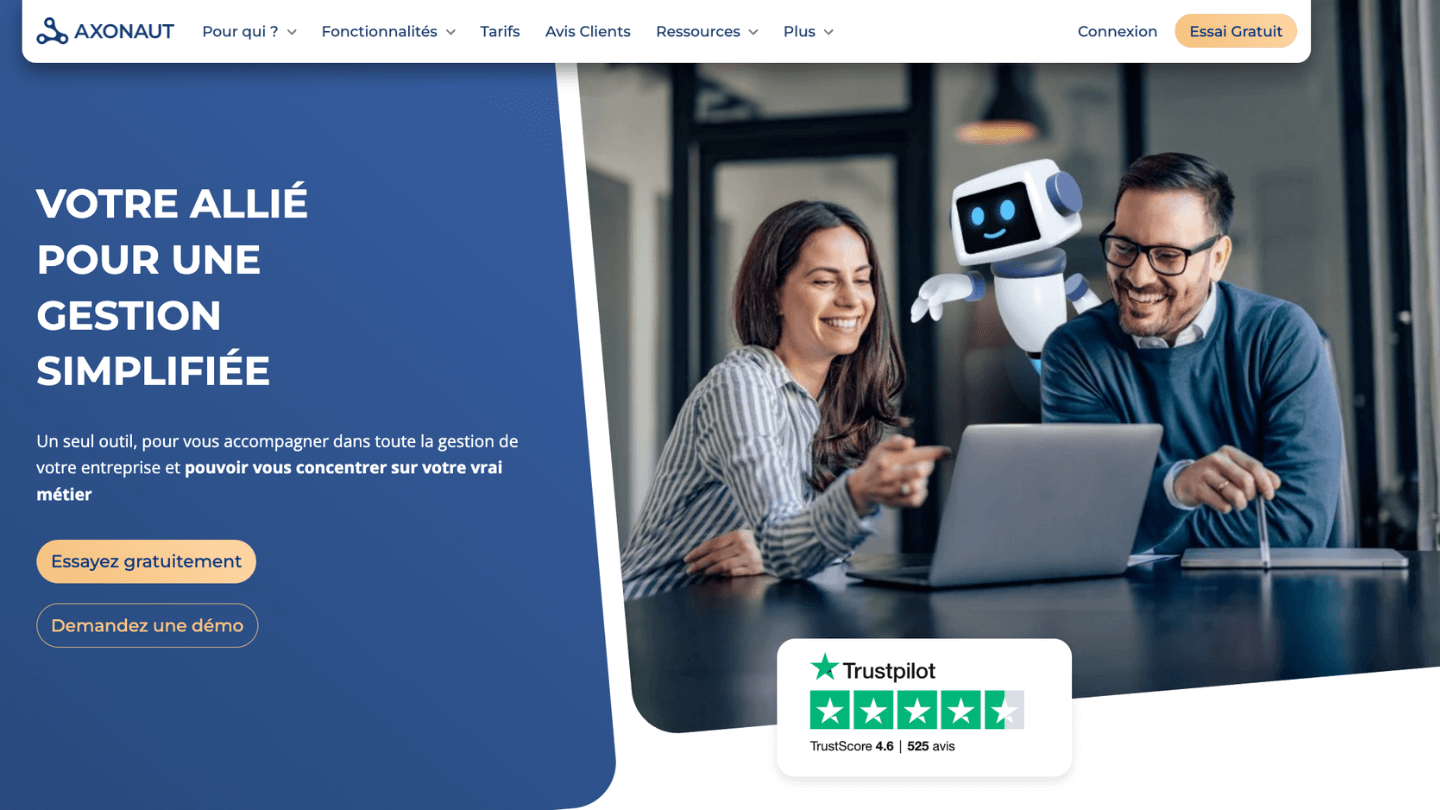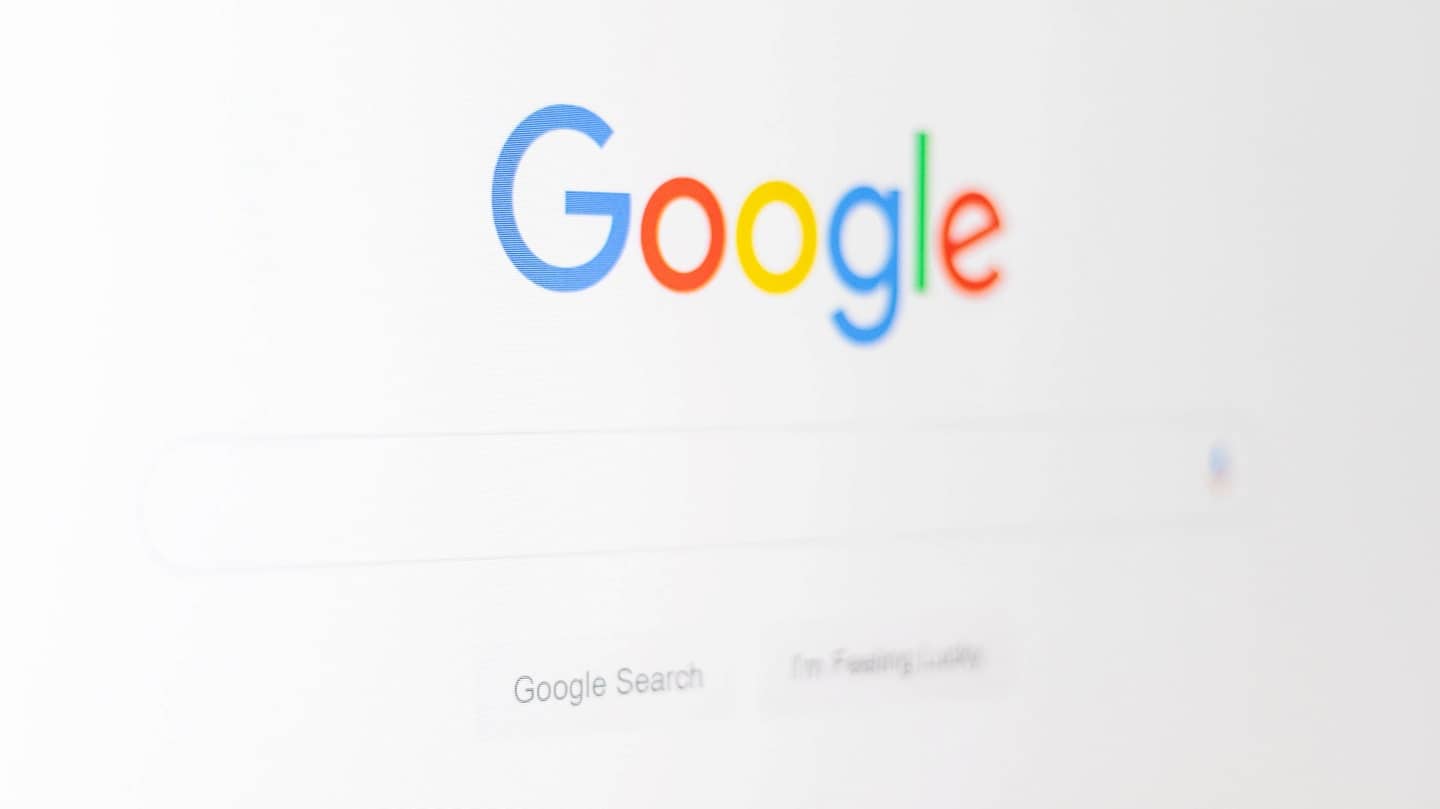The DISC method is a psychological assessment tool for determining an individual’s psychological type. The acronym reflects the four personality traits identified: Dominance, Influence, Stability and Compliance.
It’s a kind of grid for reading and understanding human behavior. This method was widely used as a recruitment tool in the 1990s and 2000s.
Applied to sales, this method can be very useful to help identify the psychological profile of your prospects and then adapt your behavior accordingly. In this article, we tell you everything you need to know about this method, when and how to apply it.
Sommaire
What is the DISC method?
The DISC method was developed by American psychologist William Moulton Marston. This method is based on four factors: dominance (D), influence (I), stability (S) and compliance (C).
The DISC assessment helps an individual to understand how to adapt his or her behavior to a particular situation, by giving advice or tools to communicate more effectively, for example. That’s the beauty of this method compared to other similar tests, such as Myers-Briggs or Color Code.
The Myers-Briggs test, for example, is a great tool for understanding yourself, but it doesn’t give very specific information or tell you how you’re going to react in a given situation.
Based on these four factors, the DISC method distinguishes four types of profile:
- The Dominant: direct, demanding, a competitor at heart and able to make quick decisions.
- The Influencer: eager to shine in everyone’s eyes, eternally optimistic and capable of influencing and uniting crowds.
- The Stable: calm, discreet and loyal, and a great listener.
- The Conformist: striving for perfection, logical, thoughtful and able to identify and solve problems quickly.
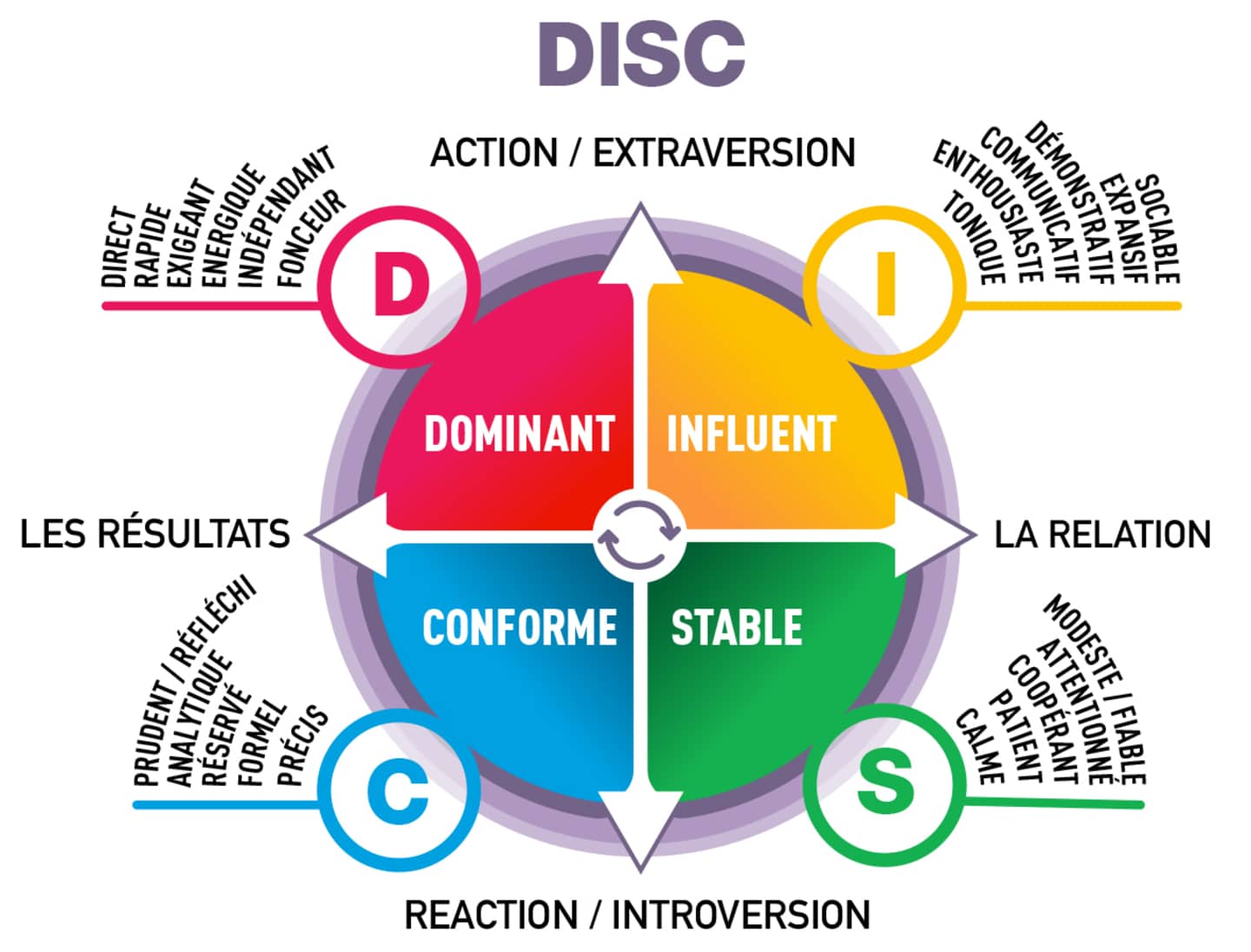
Understanding your prospect’s motivations with the DISC method
The Dominant
The Dominant prospect likes to lead and talk. This type of prospect or customer can sometimes be confrontational, as they’re not afraid to speak their mind and are desperate to get a good deal when they make a purchase.
The Dominant prospect type sees itself as powerful, energetic, innovative, goal-oriented and decisive. But he can be perceived by others as obstinate, arrogant, aggressive, domineering and insensitive.
A dominant person tends to communicate in the most efficient way possible, using short sentences and giving instructions. When you communicate with her, don’t make small talk: your speech will be perceived as light, useless and a waste of time.
In a sales situation, a profile D prospect tends to be very irritated by indecision and lack of efficiency. These profiles want to be in control, and like to feel in control of the sales process. They tend to test you, so rise to the occasion, earn their respect and close the deal!
The Influent
The Influent prospect is warm, friendly, talkative and eager to establish a close, even friendly relationship with his salesperson. These profiles are interested in novelty and originality, they are curious and above all they want to buy from people they like.
This is the type of prospect that’s easiest to convert into a customer, but also very easy to lose if they feel you’re no longer up to the job, or if you make what they consider to be unforgivable mistakes. For example, interrupt them when they’re telling a story, or give advice on how to run their business.
An Influential person tends to be very self-confident, generous, inspiring and open. This type of profile can also be perceived as egotistical, superficial or even a little light-hearted.
Type I people love to talk. They’re very expressive, using lots of gestures and easy expressions to convey what they’re saying. They love to brainstorm, but are more hesitant when it comes to making important decisions quickly. This type of profile will appreciate it if you give them time to read what you’ve produced, for example.
When a Type I prospect makes a purchasing decision, he or she takes into account the impact of this decision on his or her status with others, and the way in which he or she will be regarded. He’s not very detail-oriented, and is generally quite optimistic, but also quite volatile. He can express his firm intention to buy and then withdraw at the last minute. So make sure they are committed to buying at all costs, otherwise you risk losing the sale!
The Stable
This is the most common type of prospect. It is easily identified because it hates confrontation and pressure and wants to buy from someone who is patient and understands it! A Type S prospect makes well-considered choices, takes his time and may tend to solicit family members or friends.
A person of the Stable type is generally perceived as loyal, a good listener, calm and encouraging. She may also be perceived by others as stubborn, or reluctant to change.
A Type S person generally speaks in a low voice. She is generally reserved and can be perceived as rather formal. The first interactions with this kind of personality are very important, so don’t be too rigid. These personalities enjoy building trust, having serious conversations and establishing a certain closeness. When communicating with Type S personalities, use friendly language and try to be warm.
An S-type prospect makes a purchasing decision based on the impact it will have on those around him. He’s keen to make the right decision for everyone, and wants to discuss the details before making a purchase. So be sure to support them, be patient and become an ally for them in the buying process!
The Compliant
The Compliant is the most difficult prospect to convert into a customer. This type of personality loves data, facts and evidence. This type of prospect generally hates it when a salesperson gets too personal with them, because they’re all about the business transaction.
This type of prospect can be very demanding, and will expect you to know your products and be able to answer any questions they may have. And don’t be fooled if you go too far with certain things – he’ll ask you for tangible proof!
A Type C person sees themselves as someone who wants to be informed, as a diplomat, thoughtful and well-informed. She may also be perceived by others as pedantic, indecisive, reserved or even foolish!
C personalities are very objective, and can sometimes seem dry and distant. They are fans of long, in-depth analysis, and are very fond of details. This type of person is above all guided by logic and reason.
When making a purchase, C profiles are very concerned about making the right decision. They don’t want to buy the wrong product or service, for fear of regretting their decision and being identified by others as the person who made the mistake not to make. This type of prospect wants as much information as possible, so they can make the most informed decision possible. With this type of prospect, you’ll need to be patient and prepared with facts and information if you want to close the deal!
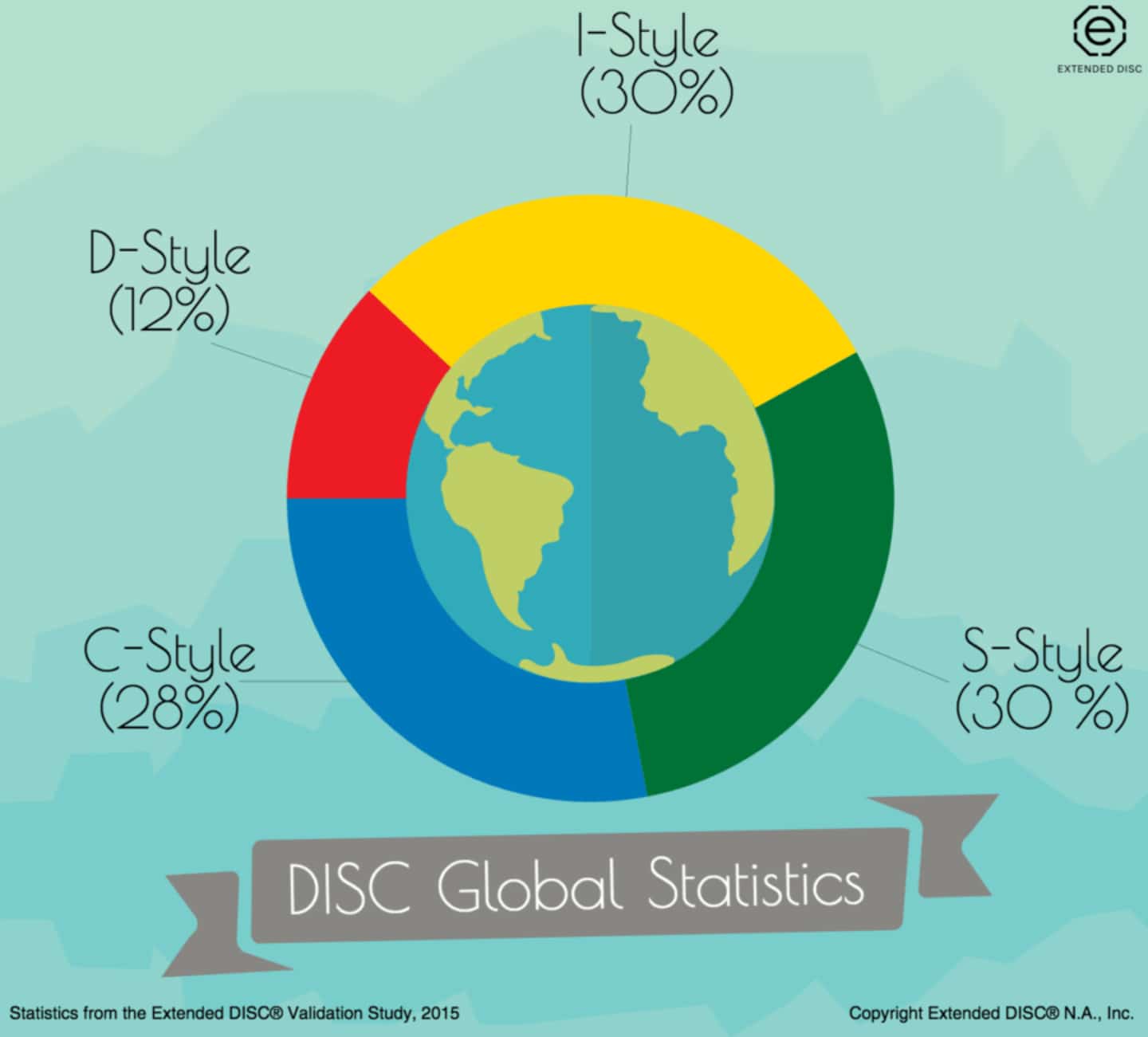
Applying the DISC method in B2B sales
The DISC method is particularly well-suited to sales, because it’s simple and allows you to make quick, accurate decisions. This method is invaluable in helping you adapt your communication to your prospects or customers, choosing the right way to argue or knowing which intonation will be most appropriate, for example.
Steps to identify your prospect’s typology
There are five main steps to identifying the type of profile your prospect corresponds to.
- The first step is to identify the person’s style, whether he or she is more extroverted or more reserved. If you can’t identify him quickly, don’t hesitate to ask questions that will help you understand his buying style.
- Once you’ve identified his buying style and what he really likes, establish a relationship with him and ask questions, identify his benefits. Don’t hesitate to get DISC certified – it’s inexpensive, fast and super effective!
- Listen actively to your prospect and only mention your product when you’re sure of what the customer really needs. It’ll save him time, and you too!
- Ask questions adapted to your prospect’s personality type.
- Always deliver as much or more than promised.
Successful selling by personality type
Once you’ve identified your prospect’s personality type, you have all the keys to a successful sale. I advise you to go through three phases: first discovery, then negotiation and finally closing.
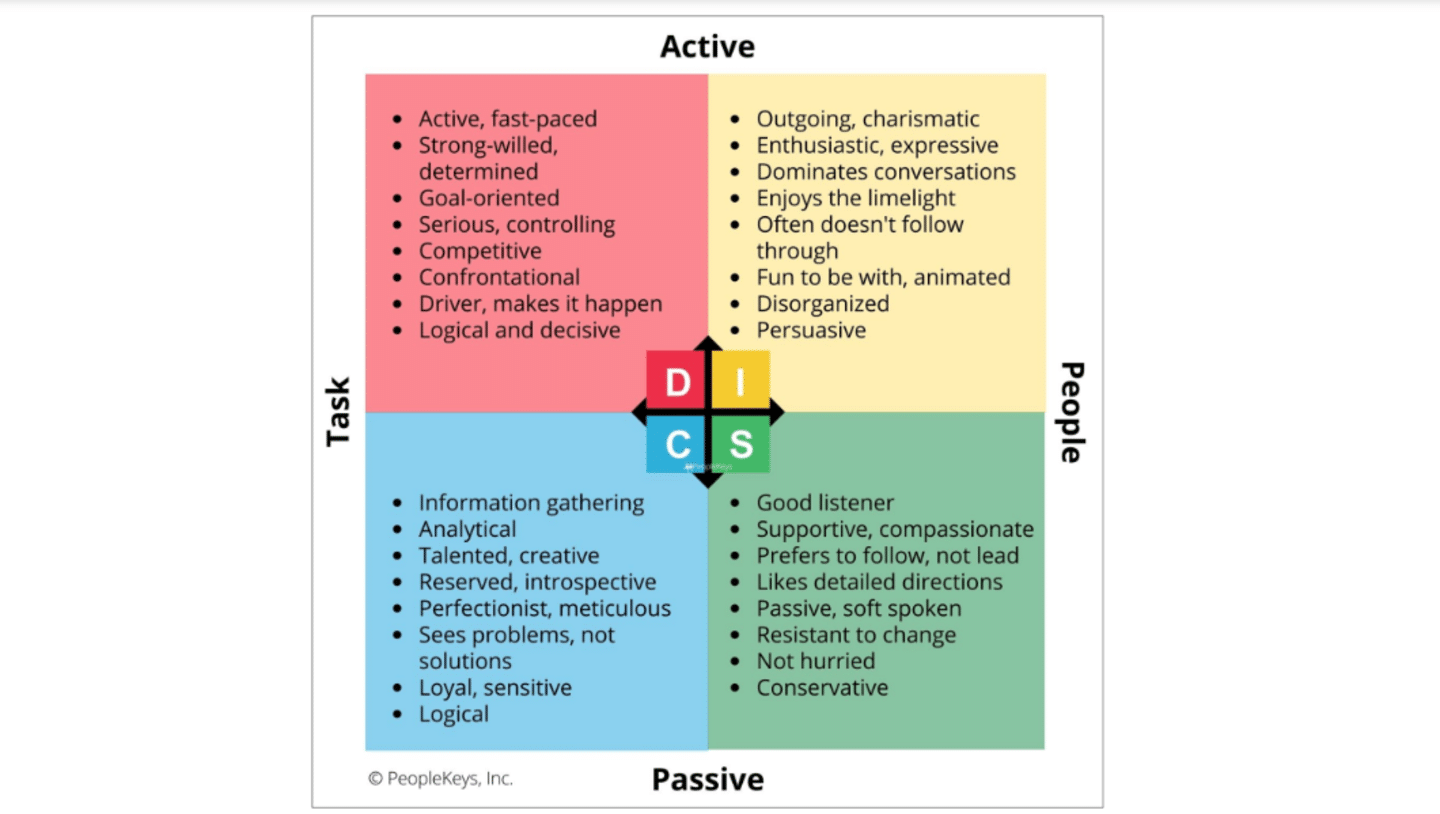
For a type D profile:
- Discovery phase: you need to get to grips with it very quickly. Keep in mind that this type of prospect doesn’t want to waste time and wants to get straight to the point!
- Negotiation phase: Show him that he’s in control of the sales process and that he’s leading the negotiation.
- Closing phase: Prove to them that they’ve won, and be there when they call if you want to turn them into a long-term customer.
For a type I profile:
- Discovery phase: this prospect will be rather friendly with you, enabling you to establish a relationship of trust with him, and not just a buyer-seller relationship. Show him you care!
- Negotiation phase: During this phase, you need to listen to any problems he may have. Don’t hesitate to create common ground to establish an initial basis of trust.
- Closing phase: Show your prospect that you treat him differently because you appreciate him and make him feel lucky to have him as a customer!
For an S-type profile:
- Discovery phase: this type of prospect will listen to what you have to offer and will tend to trust you.
- Negotiation phase: avoid rushing this type of customer, be attentive to their sensitivities and show them that your product will make their life easier.
- Closing phase: this is the time to emphasize your product’s ease of use.
For a type C profile:
- Discovery phase: this type of prospect is likely to ask you questions about the impact on him and his colleagues if he actually buys the product. He’ll want concrete, quantified proof. If you claim that the product or service you’re trying to sell them will save them time, prove it!
- Negotiation phase: During this phase, you need to be informed, analytical and argue with precise figures. You can use this opportunity to make comparisons with your competitors – provided you have accurate data to supply too!
- Closing phase: Take the work out of his hands and try to show him the expected results in the context of his business.
Going further
- Take a look at our articles on sales prospecting and our tips for finding qualified prospects and scoring your leads!
- The best email prospecting tools
- The best B2B prospecting tools
- The best b2b CRM software

